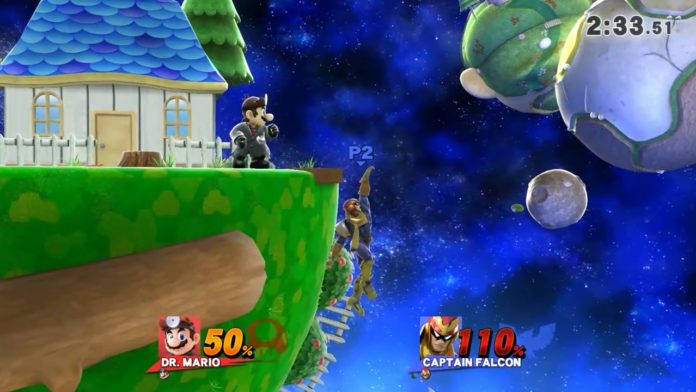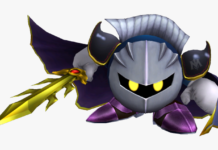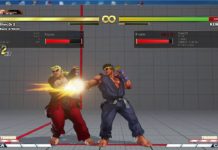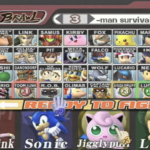Unique to the Super Smash Bros. series among major fighting game titles is the fact that players can be knocked off the stage. This leads to a situation known as “edgeguarding,” in which the player recovering to the stage must avoid the aggressing players’ attacks to safely make it back to the edge of the stage.
Edgeguarding is a vital part of the game to understand: if a player can successfully edgeguard, they can secure stocks, sometimes at very low percentages. Conversely, knowing how to avoid players’ attempts at edgeguards can help one hold on to their stocks and stay in the game.
Edgeguarding in Smash
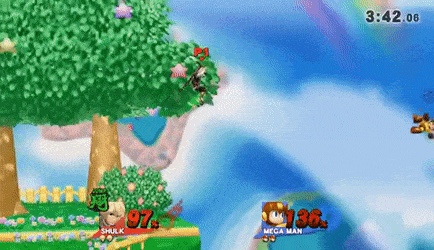
When a player sends their opponent offstage, they have two main approaches to how they can edgeguard:
- They can stay on stage and attempt to punish poor recoveries to the ledge with smash attacks, tilts or even a spike/meteor smash.
- They can go off stage and try to get a hard punish before the opponent can make it back to the ledge.
Staying on stage is usually considered the “safer” option, as you can still apply pressure to the edge of the stage while holding stage control and positioning. For many, this is a preferable approach since even a missed edgeguard attempt can leave the player in a position to ledgetrap and keep the opposing player on their toes.
Going off stage is riskier, since the player gives up stage control in favor of an aggressive option. This can backfire if the recovering player outmanuevers that option; sometimes the aggressing player can get reverse-edgeguarded, or end up in a pressured position. The payoff for going off stage for an edgeguard is that it can confirm KOs and sometimes get very early gimps; an aggressive, but well-placed edgeguard can completely turn the tide of a match.
Edgeguarding is always a cost-benefit analysis: where is your opponent recovering from? Do they have a double-jump? What moves can they use while recovering? How are they likely to approach the ledge? All of these are questions to consider alongside your own toolkit, and this will decide how you choose to edgeguard.
Additionally, the ledge itself will play a vital role in what edgeguards are optimal; and this has differed as ledge mechanics have changed through the Smash series.
Edgeguarding in early Smash games (64, Melee, Brawl)
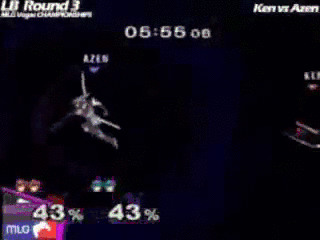
In Super Smash Bros., Super Smash Bros. Melee and Super Smash Bros. Brawl, players can grab and hold the ledge to prevent a recovering opponent from grabbing the ledge, which leads to a lost stock for the opposing player. This is known as edgehogging.
This changes the dynamic for how people approach edgeguarding in these games. If players can knock opponents far enough away, take away their double jumps and grab the ledge at the right time, they can snag early stocks and run away with a match. For players who are recovering, it’s just as important to know how to avoid getting edgehogged; while going for the ledge in Smash is often the safest way to recover, not being careful can result in the opponent edgehogging you and resulting in a lost stock.
Brawl introduced the ledge-snapping mechanic, where characters could instantly grab the ledge with their UpB moves, making recoveries much safer than before. In Super Smash Bros. and Melee, recoveries had to be extremely well-timed to grab the ledge without getting hit by tilts or smash attacks. The ledge-snapping mechanic in later installments placed a stronger emphasis on holding stage control or going off stage rather than the third option of punishing poor recoveries at the ledge.
Edgeguarding in later games (3DS/Wii U, Ultimate)
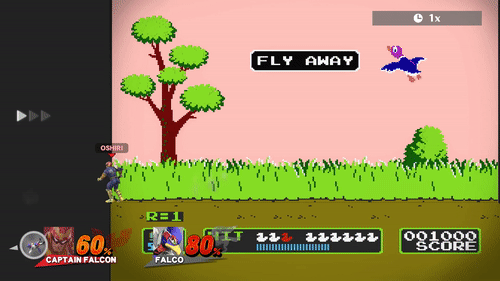
Starting with Super Smash Bros. for 3DS, the series began using a new mechanic known as ledge-trumping. Rather than a player hogging the edge and the opponent falling to their death, ledge-trumping allowed recovering players to steal the ledge and force their opponent off. Couple this with the fact that players couldn’t continuously regrab the ledge for invincibility anymore (a mechanic introduced to combat planking) and it became a completely different dynamic around the ledge.
There’s also the concept of two-framing: this is when someone is able to hit the opponent during the two frames of vulnerability when they first grab the ledge. It’s tricky to do but can lead to KO confirms and additional pressure.
These new mechanics change the approach to how people pressure the ledge, and in turn, how people approach recoveries. Faking going for a ledge-trump can be just as effective as actually going for one, depending on what the opponent is thinking. The possibility of getting two-framed means that recovering players need to have responses for if they get hit or if they snap ledge. There’s a lot to think about, and having answers for all scenarios is crucial.
Edgeguarding continues to evolve, and the only way to get better at both recovering and punishing recoveries is to think about as many edge scenarios as possible, and they put them into action. Players won’t have answers to situations they haven’t experienced, so putting in the time to cover any and all options could be the difference between winning or losing that most important match.


